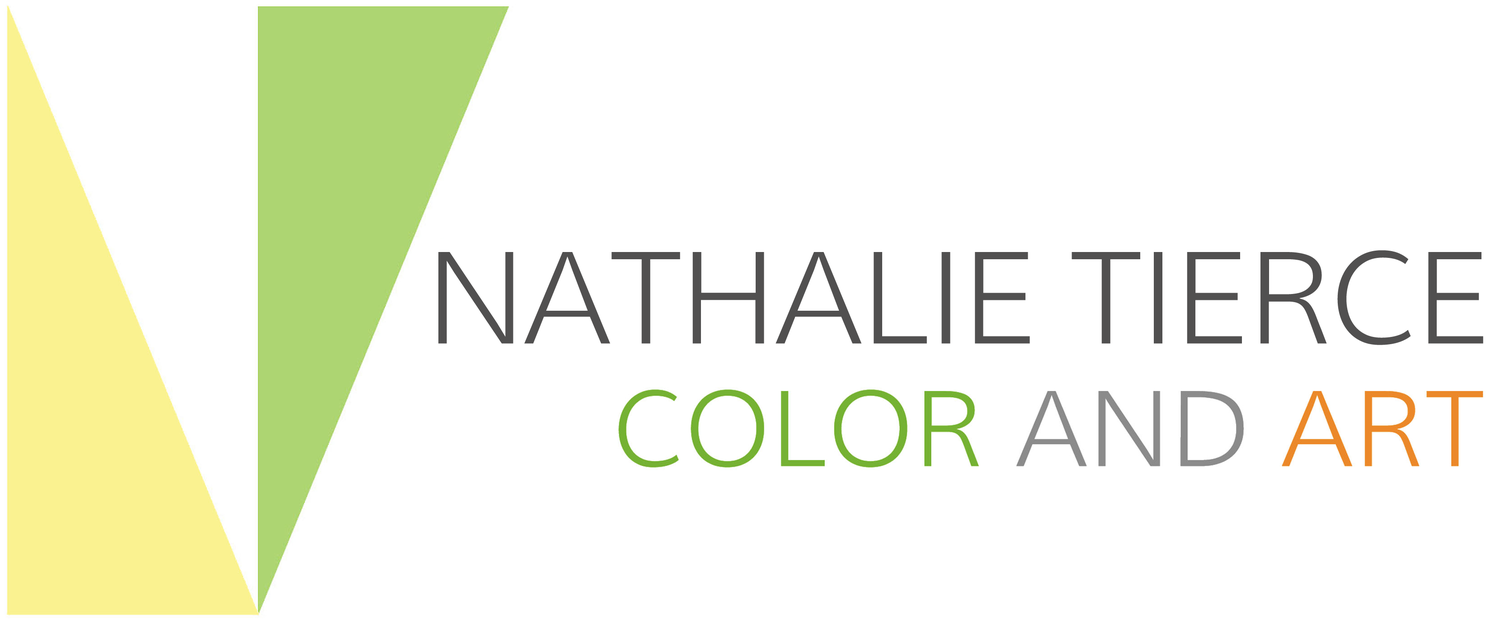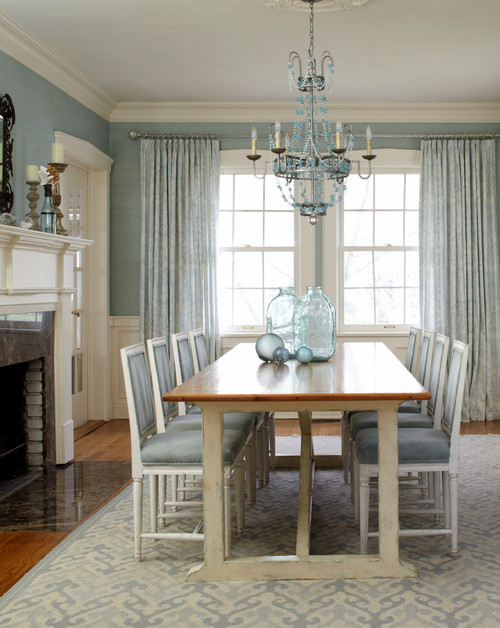
DESIGN BLOG
Thoughts
&
Musings
Shades of Blue
The color blue in its most positive symbolism and psychological influence conveys intelligence, communication, trust, serenity, reflection and calm. Some of its negative connotations can be coldness, aloofness, and lack of emotion.
The skill of using color in design and art to its best advantage is knowing how much, where and why.
A good example and simple illustration is the difference between the two interiors above and below; the first uses a deep ultramarine blue as the dominant theme, below a lighter sea foam blue.
Even though the common denominator is blue; the difference in effect couldn't be more radical. The first conveys a strong, quiet, earthy, contemplative mood. The second although peaceful is far more delicate and ephemeral.
Below is Picasso's self portrait done during his blue period. His gaze is a faraway, pensive look. The surrounding blue creates a mysterious atmosphere; his coat in a deeper navy anchors the pale jaundiced visage of the painter.
Pablo Picasso, Self Portrait
Just as blue can be used as a device to create an entire mood, it can also be used as a way of balancing out the presence of a color such as this orange / red and stopping it from completely dominating a room. In this instance, the exciting warmth of the couch's color is countered by the cool blues in the water and sky of this landscape I created for a client's home, clearly illustrating using color in art as a design solution.
"The Queen's Necklace" by Nathalie Tierce
Understanding Which Color is Right and Why
A space can serve a singular purpose or have several functions. Color reinforces that harmony between that environment and the reason someone is in it.
Some spaces are for social gathering and interaction, others for quiet contemplation. Understanding the psychological effects of hue on our minds and emotions makes for better choices in designing living areas with color.
A study which illustrates the power of color effecting state of mind was done in the 1960's. Violent prisoners at a Naval Detention Center were placed in cells painted particular shade of pink (now known as Baxter - Miller Pink), there were no incidents of violent or erratic behavior. Exposure of 15 minutes was enough to have the effect.
Another aspect to understanding color sometimes ignored is the type of light the area in question receives. This gives rise to one of a very common problem of seeing a paint swatch or fabric sample in a showroom and then getting it home and it looking completely different to the way it did in the store.
Natural sunlight provides the widest spectrum of light allowing us to perceive the widest spectrum of chroma.
Even so, depending on the direction of light and time of day there is a huge variation in terms of the light being warm or cool.
Monet's Haystacks early morning
Monet's Haystack's evening
Artificial light, LEDs, for example have an enormous range of variation as seen in the chart below. This can have an enormous impact in the way a color reads in one place to another.
As the higher an LED is in terms of its Kelvin rating, the cooler and brighter the light will be. On the lower end, the light will appear warmer or more yellow akin to candlelight.
So, for example a warm light will dull a cool color and intensify a warm one.
Another elusive variable to the color selection process is surface texture. This is linked to a phenomenon called metamerism. The same color on two different surfaces will appear differently to the eye because of how the light waves are reflected back. This is a prevalent frustration when a sample color on a smooth surface (like card paper) appears different from paint on drywall.
These factors can help you understand the way color behaves as it does and narrow down the selection process. Ultimately though, the last stage of picking a color is to put up samples. This is the only way to really experience the color in its proposed setting and allows you to see it as it changes during different times of day.
Art For A Dark Corner
Print on LED mount. Art and Photo credit Nathalie Tierce
A client of mine asked if there was any way to light up a dark corner of her living room with one of my works of art. I thought she wanted to create a focal point for the room and light it with directional spot lights. That wasn't what she had in mind at all. She really wanted to light up the area with the artwork itself. I loved the idea, I just had to figure out to do it.
Inside workings of the LEDs within the light box frame mount.
After much research I found a graphics company that could print my artwork and then weld it to canvas. From there, a sleek frame would be built to mount the canvas. Within that frame were rows of LED lights, controllable by a dimmer switch to the side.
Bob finding where the joists are behind the drywall and preparing for the installation of the light box.
Taking back the canvas to attach the support to the wall.
Tucking the canvas back in.
With the dimmable switch, the glow of the art work can be changed to suit the mood of the room. As the lights are LEDs, they pull little power and last long time. Once the light box is in place, the print can be changed out, transforming the space again.
Tags: #artforhome, artlight, #artlight, #lightbox,#customizablelight, artinstallation, #newideaart,#darkcornerroom





